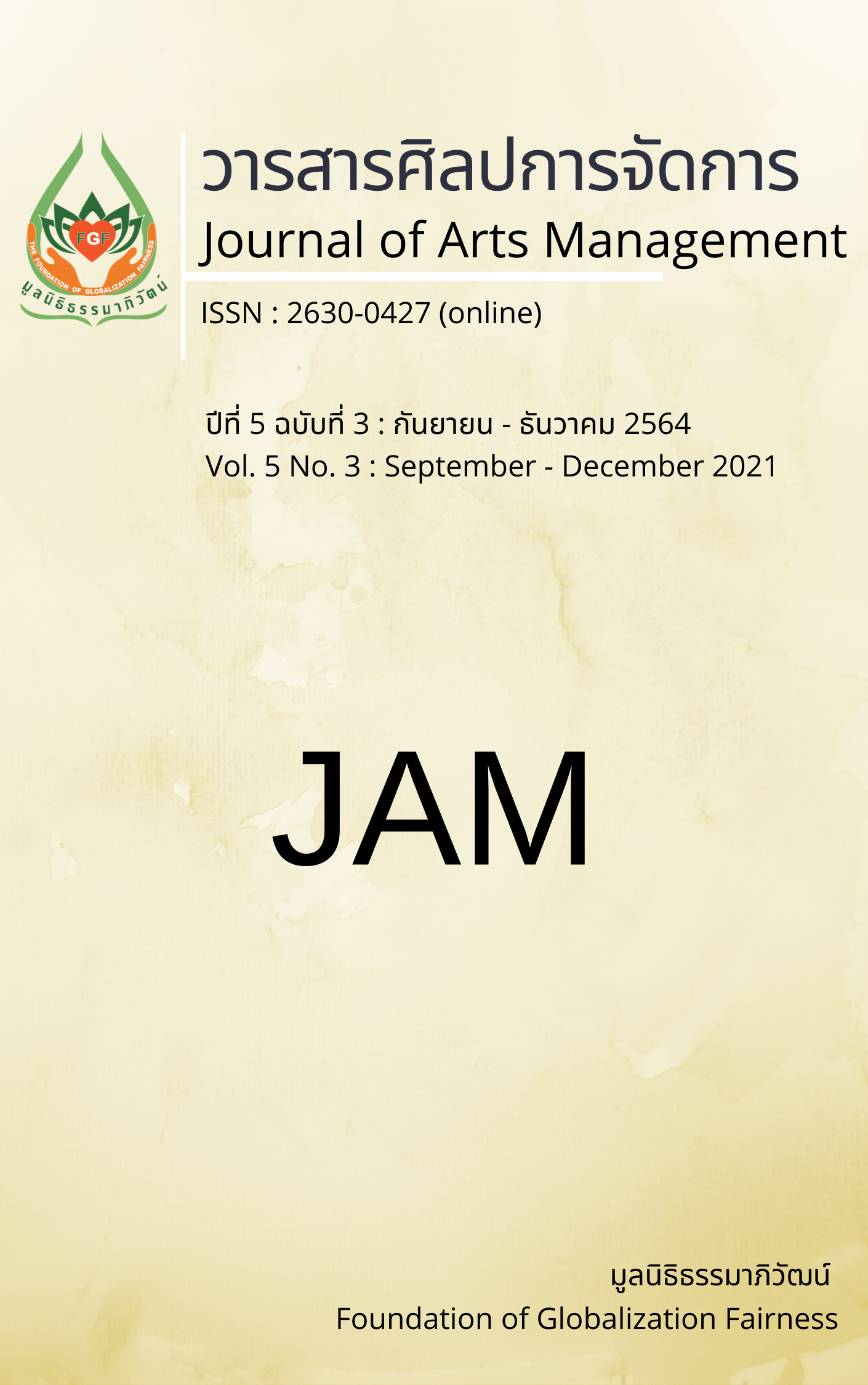The Development of Knowledge and Community Components of “Smart Community” for Community in Thai Society
Main Article Content
Abstract
This article aimed to study and present the form of a creative community, the “Smart Community” of the Thai community. This was a documentary study to conduct reviews of relevant concepts, theories, documents, and research for analysis. This was synthesize 50 factors that directly influence the composition of the creative community in-depth interviews with 50 key informants or people to study the community's context and a focus group discussion with 10 experts. And community engagement with 46 key stakeholders with a descriptive content analysis technique. The research results were found as follows: A creative community model, the “Smart Community” of communities in Nakhon Sawan Province, consists of two parts. Part 1: Community Creativity "Smart Community" refers to the development of a village or community, to be livable, modern, and sustainable, with the environment, culture, quality of life, economy, and society suitable for living. Create a quality of life that is safe without crime. And a social learning center Creative Community Elements "Smart Community" consists of 5D: Good People -Smart People, Good Culture -Smart Culture, Good Environment -Smart Ecology, Good Economy -Smart Economy, and Local Wisdom -Smart Technology. Part 2 Factors affecting community development to become a creative community, "Smart Community" - Smart 5D must consist of three main drivers (IES) composed of 1) internal factors (Internal Factors) as factors. Caused by development within the community, consisting of H + P + E + L, human capital, public participation, economic capital, and learning community, and 2) external factors are factors resulting from development outside the community, comprising A + C + G, alliance, community development and government.
Article Details
Views and opinions appearing in articles in the Journal of Arts of Management It is the responsibility of the author of the article. and does not constitute the view and responsibility of the editorial team I agree that the article is copyright of the Arts and Management Journal.
References
Amesbutr, J. (2020). Why Thailand should develop to smart communities. https://smarteei.com/2017/07/04
Boonvon, S. et al. (2008). The social capital management of strong community in Buriram Province. The Journal of Faculty of Applied Arts, King Mongkut’s University of Technology North Bangkok, 11(2), 36-47.
Chandaeng, W., & Adiwatanasit, C. (2012). The development of the model for a strong community
management in line with sufficiency economy in upper central Thailand. The Golden Teak:
Humanity and Social Science Journal, 18(2), 23-40.
Chatpakarat, T. et al. (2018). Development of a smart community learning resources model in the 21st century to enhance lifelong characteristics of people. Sukhothai Thammathirat Open University.
Friedmann, J. (1993). Empowerment: The politics of alternative development. Oxford University Press.
Jeena, Y., & Jeena, R. (2018). Ba Worn Santisook Project: A participatory model of home, temple, school for promote morality of 12 values, Chiang Mai. Journal of MCU Peace Studies, 6(Special Issue), 47-60.
Kaewkong, W., & Veerakultavan, S. (2009). The strengths of Suay community at Nongtadam village, Nongki District, Buriram Province. The Academic Journal Buriram Rajabhat University Humanities and Social Sciences, 1(2), 46-53.
Kangsakulnit, T. (2019). Guidelines for the development of smart cities in Thailand in the future. Office of the Public Sector Development Commission.
Kanoknukulchai, W. (2019). Smart city: Opportunities and challenges for engineers. Prachachat, (July, 11-14), p. 17.
Khurasri, P. (2018). Integrating of the dharma principles for strengthening Thai community development. ARU Research Journal Humanities and Social Sciences, 5(3), 113-122.
Pawala, T. (2018). Model of creating sustainable food security of households in Nong Mek Sub-district, Nachueak District, Maha Sarakham Province. Journal of Research and Development Institute, RajabhatMahaSarakham University, 5(1), 143-154.
Phra Brahmagunabhorn (P. A. Payutto). (2008). Sustainable development. Komol Keemthong Foundation.
Phra Nipich Sophano (Anantakitsopol) et al. (2017). Community development based on Buddhist community. Journal of MCU Social Science Review, 6(2 Special Issue), 489-504.
Phrarachrattanavedhi., & Soonthondachar, J. (2020). Causal relationship of driving Tambon training unit of Sangha central region in Nakhon Sawan Province. The Journal of Research & Academics, 3(1), 15-28.
Phrasuthirattanapandit Nantanit Somkid. (2019). Development guidelines for creative communities in Chanthaburi Provincial areas. Mahachula Academic Journal, 6(Special Issue), 318-333.
Phra Thammathorn Sakda Kittisampanno., Phrama Mit Thitapanyo., & Bamrungphak, S. (2019). A study of livable community building in accordance with the Buddhist principles of Wat Samsuan, Nong Sawan village, Banlhoa Sub-district, Banfang District, Khon Kaen Province. Journal of Graduate MCU KhonKaen Campus, 6(1), 287-298.
Saybunjaung, W. (2018). Community perspective on the idea of community empowerment: A case study of Ban Playkong Bang Pho Nuea Moo 3, Bang Pho Nuea District, Pathum Thani Province. Valaya Alongkorn Review (Humanities and Social Science), 8(1), 119-129.
Silapalo. (2005). Karma Likit: Reminder manual edition. Amarin.
Wongkachonkitti, N. (2016). The policy of smart province in Thailand. Journal of Humanities and Social Sciences Valaya Alongkorn, 11(3), 365-377.
Yimyam, W., & Tawarow, U. (2018). Factors contributing to community strength of village models for sufficiency economy, Amphoe Koh Chan, Chonburi Province. The Journal of Faculty of Applied Arts, King Mongkut’s University of Technology North Bangkok, 11(1), 39-50. file:///C:/Users/HP/Downloads/2199-5420-1-SM.pdf


